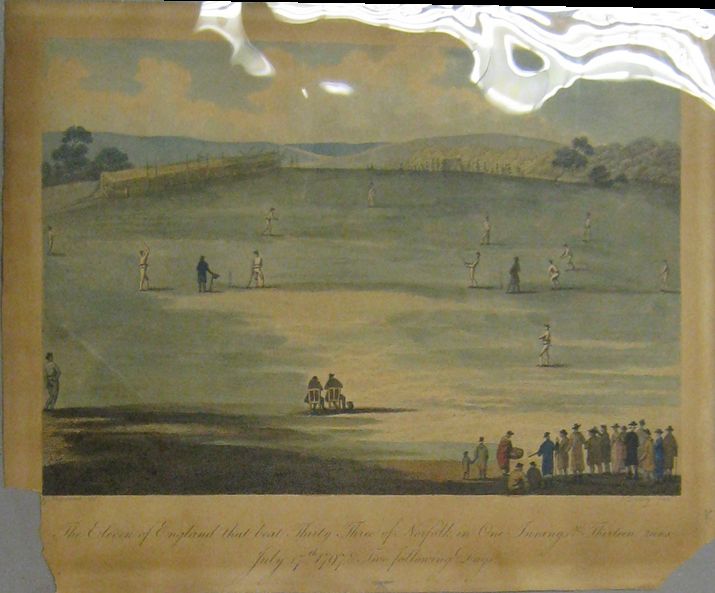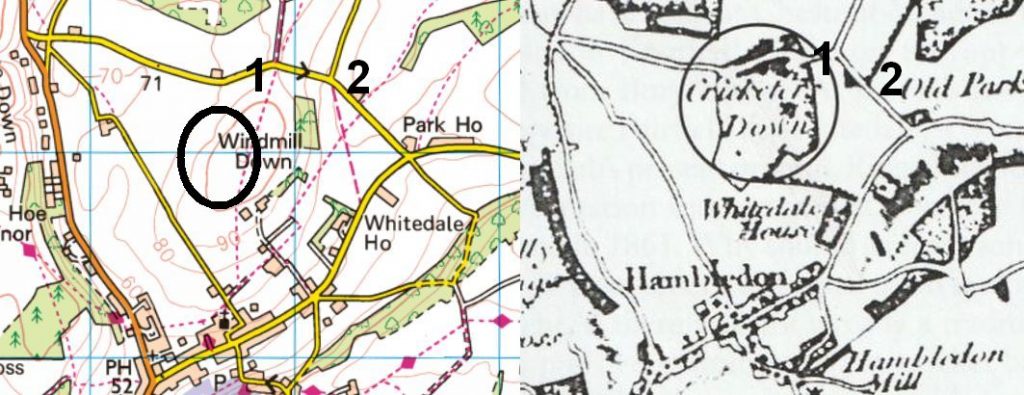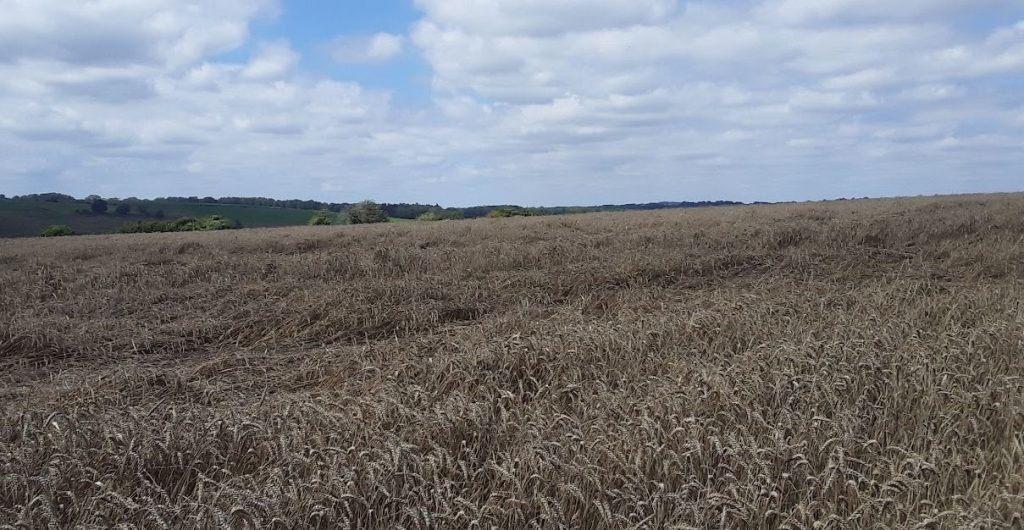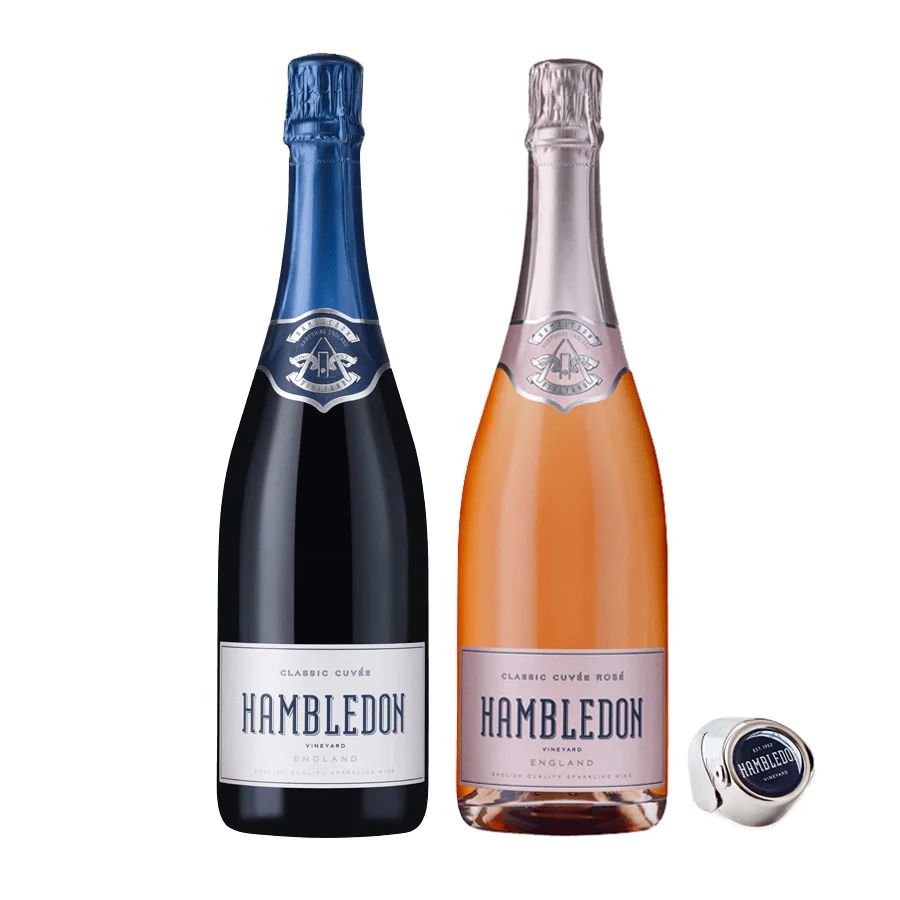Contents
History
Broadhalfpenny Down was always an unlikely location for cricket ground; away from the village, on an exposed, uneven hilltop. Surprising perhaps that it was not until 1782 that the club acquired another ground. What was equally surprising was that this was also another hilltop ground, albeit a little closer to the village. This ground was at Windmill Down and it was here that they played their home matches for then onwards. Nyren says of it:
‘It was one of the finest places for playing on I ever saw. The ground gradually declines every way from the centre; the fields-men therefore were compelled to look around them, and for this reason they became so renowned in that department of the game’.
Unlike Broadhalfpenny Down however, there was no public house in the vicinity, but a club house was built which may well have served refreshments, this was known as The Lodge and would seem to be the first purpose build cricket building ever. It was brick built by the Criketer, Tom Sueter, and continuously improved. The Universal British Directory noted in 1793:
On the said Windmill down is a new building erected, for the selected gentlemen of the cricketing club, to dine and enjoy their beverages in; which assembly annually meets in May and continues weekly, every Monday, till the season for partridge shooting commences
So obviously this is a significant structure and is marked in a map of 1791, towards the south of the ground. There is however no trace whatsoever of this building now.
The move to Windmill Down took place at the time when the centre of cricket was relocating to London. In fact, One of the principal patrons of the Hambledon Club, the Earl of Winchilsea, was instrumental in encouraging Thomas Lord to open a new ground in London in 1787, one which was to become the home of the famous Marylebone Cricket Club. Richard Nyren left the club in 1791 and the days of grand matches were nearly at an end. The Hambledon Club held its last meeting in 1796 attended by only three members. The club in fact reformed in 1800 and had several successful years, albeit reduced in status to a more normal village cricket club. This club itself suffered a decline in the 1820s and it seems that the last cricket took place there in 1836. The Cricket House was demolished and the field was ploughed over and forested in the 1880s. The summit is now split between arable land on the west and a large vineyard on the east.
After 1836, occasional games still took place involving the village, but the modern Hambledon Cricket Club properly traces its origins to a meeting in 1857. The ground adopted by the new club, one which is still used to this day, was at Ridge Meadow, Brook Lane, less than half a mile from Windmill Down, in the direction of Park House. The Club is thriving with a large youth membership, boys and girls, and strong representative teams.
Meanwhile, the Windmill Down ground is unmarked and all but forgotten. It takes finely-tuned sensibilities to detect the echo of the cricket of ages past.
Important matches
| 1 | 8 Aug 1782 | Hampshire | England |
| 2 | 5 Sep 1782 | Hampshire | Sussex |
| 3 | 8 Jul 1783 | Hampshire | Kent |
| 4 | 26 Aug 1783 | Hampshire | England |
| 5 | 19 Sep 1785 | Hambledon | Farnham |
| 6 | 13 Jul 1786 | Hampshire | Kent |
| 7 | 3 Sep 1787 | Hampshire | Kent |
| 8 | 13 Aug 1788 | Hampshire | Surrey |
| 9 | 13 Jul 1789 | Hampshire | Kent |
| 10 | 4 Aug 1790 | Earl of Darnley’s XI | Earl of Winchilsea’s XI |
| 11 | 13 Jul 1791 | Hampshire | England |
| 12 | 16 Jul 1792 | Hampshire | Surrey |
| 13 | 19 Jul 1792 | Hampshire | Brighton |
| 14 | 12 Jul 1793 | England | Surrey |
| 15 | 20 Jul 1795 | Earl of Winchilsea’s XI | R Leigh’s XI |
Possible picture – Artist G. Shepheard based on an engraving by J. Dadley.

This is a coloured line engraving of a Cricket Match. It was published in 1799 accompanying a scorecard, and ostensibly illustrating, a match at Swaffham, Norfolk July 17th 1797 between XI of All England against 33 of Norfolk. But the hills in the background – not very Norfolk-like at all. Could the picture just have been borrowed?
Interestingly, in his book about Hambledon, The Glory Days of Cricket, Ashley Mole identifies an engraving of this picture as being Broadhalfpenny Down and the structure on the far side as being The Lodge, a kind of pavilion for spectators. However, as we know the structure was sited at Windmill Down, Mote (a convicted fraudster) is wrong in at least one respect. Could it then be Windmill Down? Certainly the background is like the Sussex Downs. The identified engraver, J. Dadley was born in 1767, so if the picture is from, say, early 1790s that would be a possibility.
The Lodge is known to be towards the South of the ground, so this view would be looking towards Hambledon, a tiny bit like the first photo I show below, but that is much lower down. However the downs are still (just) visible so that is a point in its favour – (Hambledon village is in a valley); also the picture above is presented from an unnaturally high vantage point so the artist would be justified to include hills not generally visible. The main point though is this – if the structure on the far side is not the Lodge at Windmill Down – then what is it?
If it is Windmill Down – and I am aware of no evidence that this been considered before – what an amazing discovery this would be. I will have to check further.
Location

Two maps of Windmill Down, adjusted so the scales are similar. The map on the right was published in 1810 by Colonel Mudge and shows ‘Cricketers Down’, the site of the ground. Pleasingly, the road layouts are fairly similar, and Old Park House is shown on both. The numbers 1 and 2 highlight my interpretation of key points; in essence, both maps have two road leading north at these numbers – I believe these are the same tracks although in the modern map, the road to the East look more prominent than it does in the ancient map, while the reverse applies re the road to the West. The ellipse on the modern map is my guess as to where the ground was, I have moved this towards the southern end of that marked on the ancient map so as to capture the brow of the hill. Maybe it should be more to the east as well, which would push it more onto the land of the present-day vineyard.

Here is a photo of Windmill Down as it is now, taken from the north, near the mark 1 in the maps above, on a rainy day The presumed location of the ground is towards the crown and the famous Hambledon Vineyard is to the left. I must add that this photo was taken at some personal cost, both in enduring the rain and suffering the derision of my companions (from the car) for engaging on such a supposedly pointless exercise. Barbarians!

And this unremarkable photograph was taken on a nicer day on the down itself, from the south and nearer the peak. Hereabouts the hill you see is a gentle dome; it is just about possible to imagine the stumps been pitched at the peak with slopes leading away in all directions. Above, we see the Western side of the down. The East and South is now planted with the vines of the vineyard.
The modern-day vineyard

Illustrated here are wines from the Hambledon Vineyard, occupying part of Windmill Down. Established in 1952, it is the oldest Commercial Vineyard in England. The bat and ball logo from Broadhalfpenny Down features on the neck label, emphasising the village’s connection with early cricket. In 2022 the vineyard produced over 400,000 bottles of premium quality sparkling wine; by 2035, they aim to produce one million bottles. With Climate change, the optimal area for growing the variety of grapes that produce complex sparkling wines is moving northwards and this factor, combined with the chalk-type and eco-system of the South Downs, mean that the wines of this area are becoming the equals of Champagne. This industry can be expected to grow and grow – in all senses of the term.
A tour of the Vineyard is certainly recommended.
Cheers.
